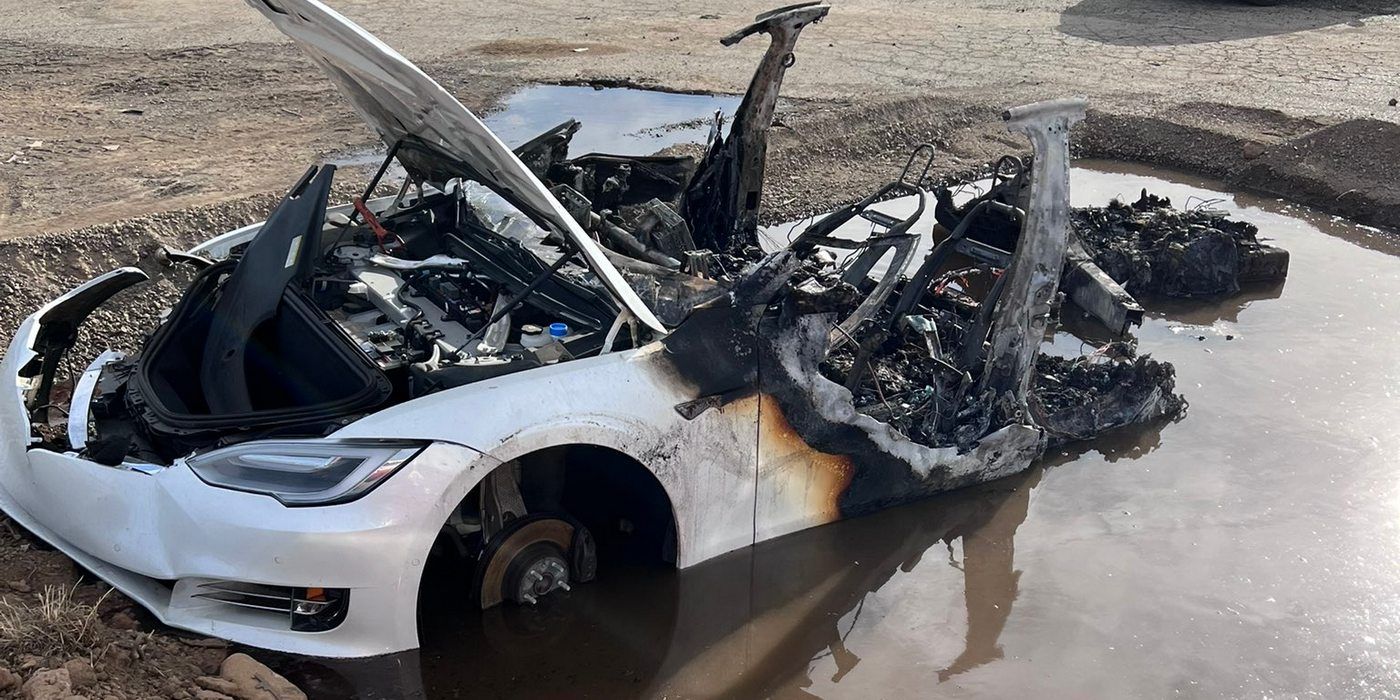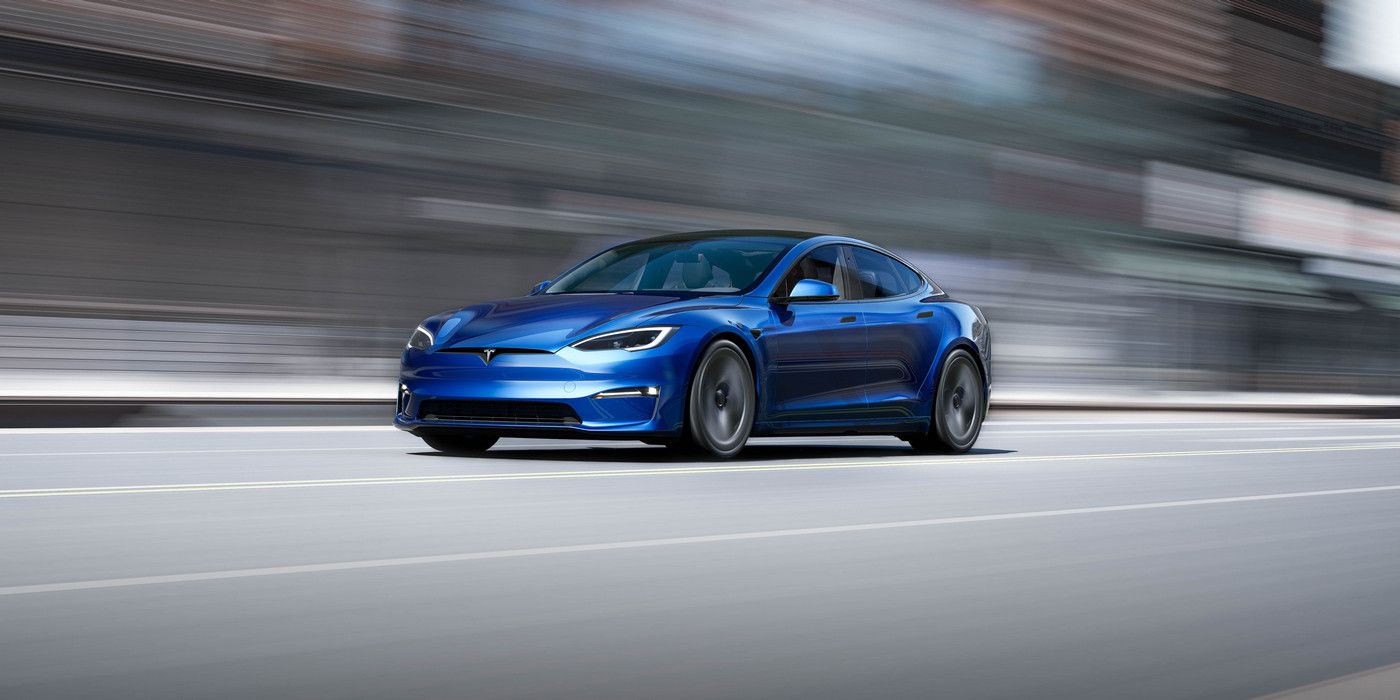A Tesla Model S reportedly burst into flames spontaneously after sitting in a junkyard for three weeks. Electric vehicles have become increasingly popular globally over the past few years. However, many early adopters and would-be buyers have raised concerns about reports that EVs often catch fire, seemingly without any apparent reason. While some argue that the fire risk from electric cars is less than for conventional vehicles, others point to reports of spontaneous combustion, as well as first-hand accounts of how these vehicles sometime catch on fire while driving in high temperatures.
Tesla is the world's leading EV manufacturer, and the Model S is the company's flagship car. The original Model S debuted in 2012, while the Model S Plaid was announced in 2021. It is a speed demon in a straight line and accelerates from 0-60 in just 1.99 seconds. The car routinely breaks its own quarter mile world records, traversing the distance in less than 9 seconds. Earlier this month, the Model S Plaid reportedly set a new quarter-mile record by covering the distance in just 8.834 seconds, at a top speed of more than 161 mph.
As reported by The Washington Post, a white Tesla Model S reportedly caught fire in a Sacramento junkyard three weeks after it was sent there following a collision. Firefighters reportedly had a difficult time putting out the blaze as the battery kept reigniting every time from residual heat. Eventually, they managed to put out the fire by submerging the car in water. To do that, the firefighters dug a hole in the ground, put the car in it and then filled the hole with water. The fire department also posted short videos of the fire on Twitter and Instagram, showing exactly what they had to deal with.
EV Fires Can Be Difficult To Put Out
Talking to the Post, Sacramento Metropolitan Fire Department spokesperson Parker Wilbourn said that the fire burned hotter than 3,000 degrees, and the only way to extinguish the blaze for good was to submerge the battery. According to Wilbourn, the fire department took an hour and 4,500 gallons of water to extinguish the blaze. Wilbourn also said that the department is yet to determine why the Model S spontaneously burst into flames.
EV fires can be difficult to deal with, as many fire departments from around the world are finding out. Earlier this year, a cargo ship named Felicity Ace caught fire while transporting a bunch of Volkswagen cars from Europe to North America across the Atlantic. It's still not clear why the ship caught fire, but the lithium-ion batteries in the EVs on-board reportedly made it extremely difficult to put the fire out and it kept burning for days before the ship eventually sank. The Tesla, thankfully, was on ground, making it relatively easier to put out the blaze.
Source: The Washington Post, Metro Fire of Sacramento/Twitter


